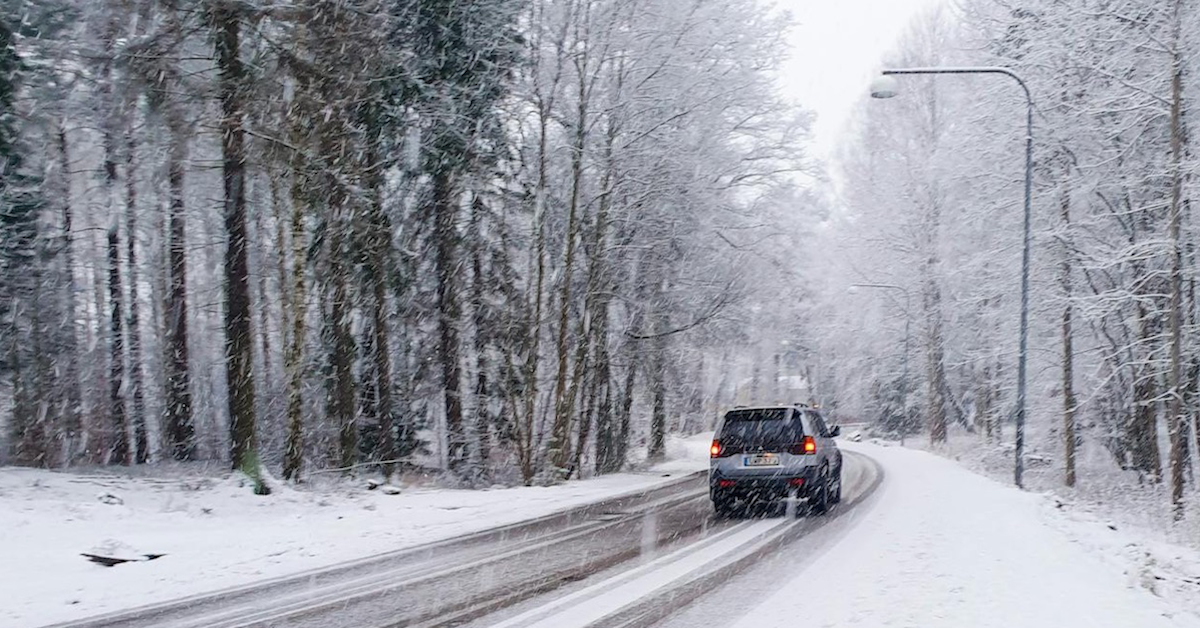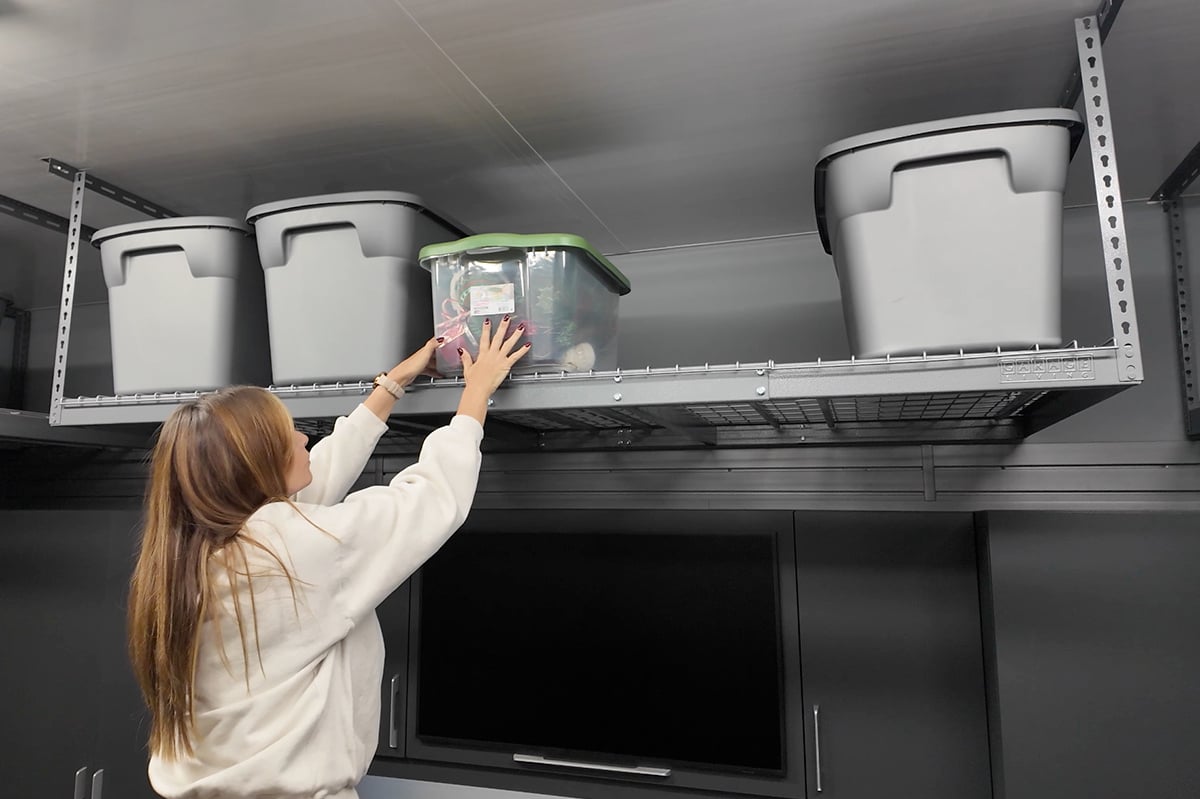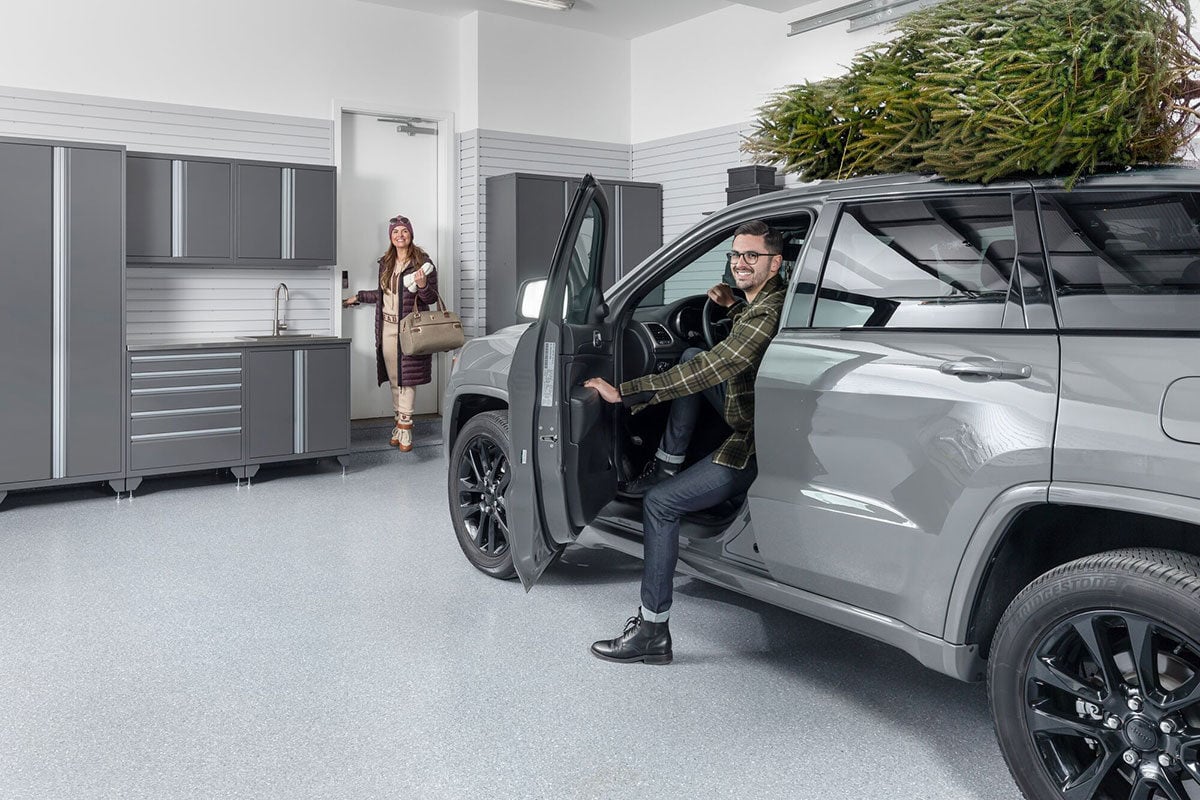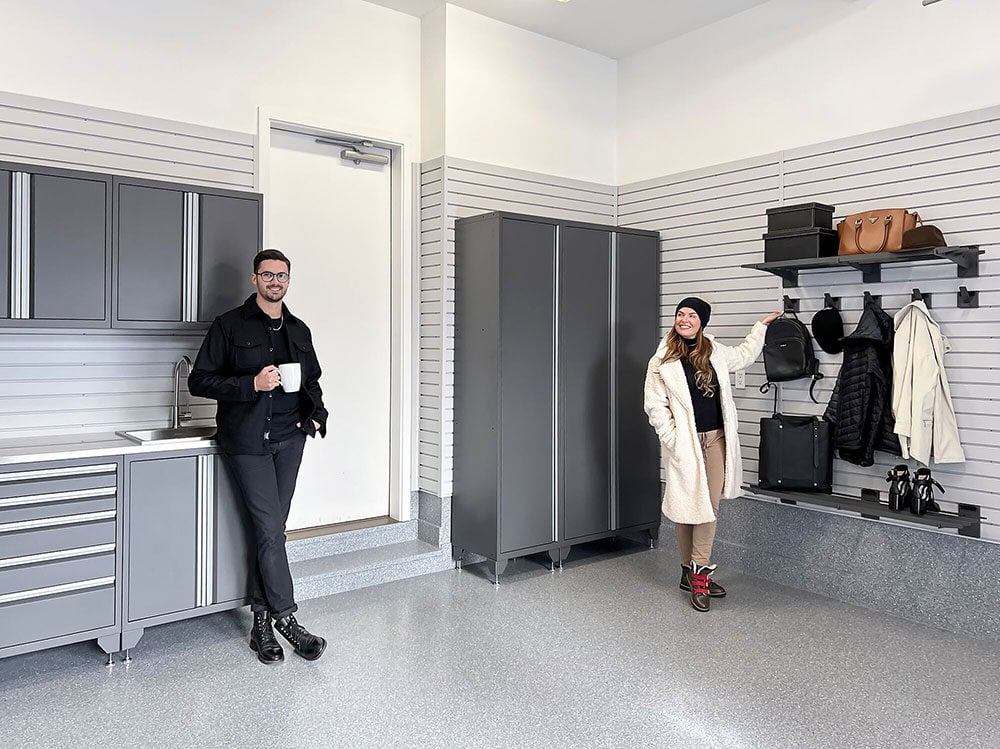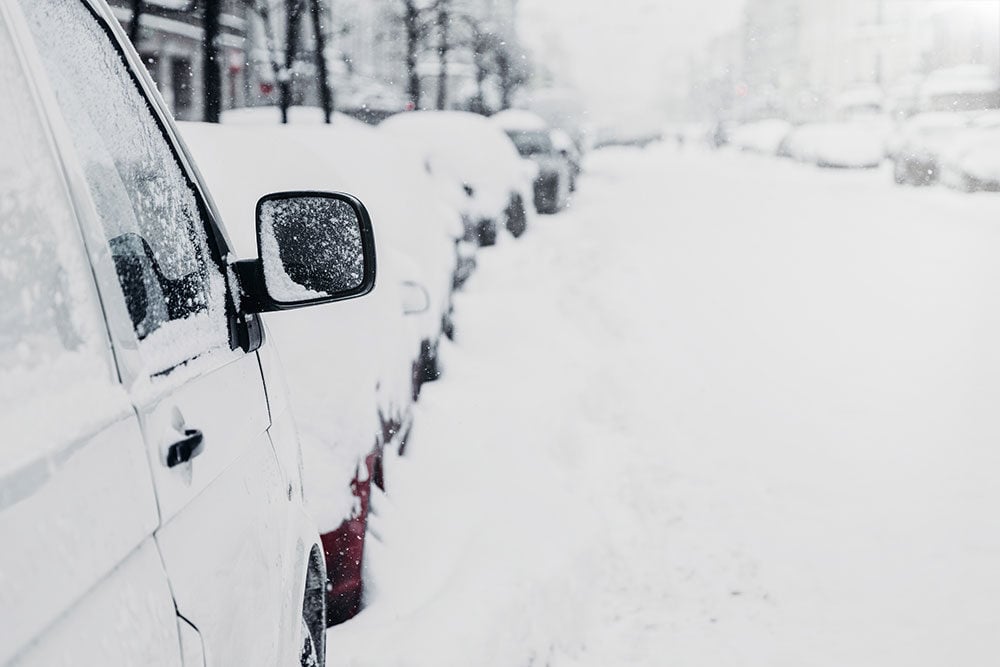Garage Flooring |
Garage Makeover
9 Winter Driving Tips for Staying Safe on the Road
Winter is the most challenging season for drivers as roads often become treacherous due to snow and ice. Our visibility is also reduced by falling and blowing snow, as well as there being fewer daylight hours. Over 70% of American roads get five or more inches of snow annually and almost 70% of the country’s population lives in these regions. Most of Canada, naturally, deals with snowy roads every winter. The U.S. Department of Transportation reports that approximately 24% of weather-related vehicle crashes occur in snowy conditions. In Canada, almost 30% of collisions happened on snowy, icy, or wet roads, according to the National Collision Database. Here are some practical winter driving tips to help you stay confident and safe on the road. Winter driving statistics Before we get into some winter driving tips, here are some additional statistics that paint a clearer view of how the winter impacts our driving experience: a third of vehicle collisions occur between 3 p.m. and 9 p.m. in the winter (SambaSafety) about 15% of vehicle crashes occur when snow or sleet is falling (U.S. Department of Transportation) only 5% fewer collisions occur during the winter even though the average person drives 20% fewer miles compared to the summer (SambaSafety) major roads experience a 30% to 40% reduction in speeds in snowy and slushy conditions (The Weather Channel) an average of 1,836 deaths and 136,309 injuries occur annually from accidents on icy roads, which is 3.5 times more compared to all other severe weather hazards combined (U.S. Department of Transportation) driving on icy and snowy roads can make a car take 10 times longer to come to a full stop (AAA) 9 essential winter driving tips Driving during the winter doesn’t have to be daunting. There are many ways to significantly reduce the risks associated with winter driving. Preparation, caution, and some winter driving education are the keys to navigating these difficult conditions safely. Follow these proven driving tips whenever you’re heading out on the roads this winter. 1. Prepare your vehicle for the winter One of the most important winter driving tips is to ensure your vehicle is prepared for handling the challenging cold, wet, and slippery weather. Some preventative vehicle maintenance can save you a lot of headaches on a cold, nasty day. In addition to familiarizing yourself with your vehicle’s safety features, here are a few essential maintenance tasks that you or a trusted mechanic should prioritize: make sure you have a good snow brush and ice scraper have your battery checked (cold temperatures weaken a battery’s power) inspect your tires (check their tread depth and pressure) consider switching to winter tires (more on that below) ensure all your exterior lights are working properly to improve your visibility and make your vehicle more visible top off your antifreeze and windshield washer fluid inspect your wiper blades and ensure they’re in good condition Infographic from AAA 2. Slow down and drive defensively Having a heightened awareness and adjusting your driving style is essential for navigating the roads in the winter. Most importantly, slow down and adjust your speed for the conditions of the road. Remember, all speed limits are decided on for optimal road conditions. Driving slower gives you more reaction time and better vehicle control. Adopt more defensive driving habits and try to be as predictable as possible on the road. Avoid sudden movements by braking, accelerating, and turning gently. Signal turns or lane changes well in advance and leave extra space between the vehicles in front of you. Be more cautious around larger vehicles and give erratic drivers a little more space. Here are some additional winter best driving practices to follow: check your side and rearview mirrors more frequently stay back from snowplows and winter maintenance vehicles and never try to pass them watch out for black ice (which typically forms by bridges, overpasses, and shaded areas) take extra care ascending and descending hills avoid using cruise control on roads that are snowy, icy, or wet 3. Clear all the snow and ice from your vehicle One of the more common sense winter driving tips that not enough drivers follow is removing all snow and ice from their vehicles. That includes clearing off the windows, roof, lights, mirrors, hood, and trunk before hitting the road. Reduced driver visibility is one of the biggest perils of being on the roads in winter. Taking the time to maximize your visibility decreases the likelihood of an accident, even if you’re only driving a short distance. Thoroughly brushing off your vehicle is also a common courtesy for the drivers around you. As you’ve surely experienced, ice and snow flying off a car or truck in front or beside you is startling, reduces visibility, and can damage other vehicles. Another way to improve your visibility to others during the daytime when there’s particularly bad weather is to turn on your headlights. 4. Plan ahead and check weather forecasts An easy way to avoid winter driving mishaps is to stay informed about the weather and road conditions. Check the forecast before heading out and plan your route accordingly. Drive on more highly trafficked roads that are likely to be plowed and treated with salt, sand, or deicer. Heed winter driving advisories and assess whether driving in hazardous conditions is worth the risk. Sometimes, the smartest way to stay safe is to avoid driving altogether. If the forecast calls for particularly bad weather, consider delaying a trip. If you have to venture out during inclement weather, give yourself extra time to reach your destination. Don’t exceed your driving comfort level and don’t hesitate to wait out poor conditions with low visibility and dangerously slippery roads by pulling into a safe area like a parking lot or rest stop. 5. Consider investing in winter tires If you live in a location that gets enough snow, winter tires are well worth investing in for both your vehicle’s safety and your peace of mind. Good winter tires significantly improve a vehicle’s traction on snow, ice, and wet pavement. University of Michigan researchers found that they stopped 35% more effectively on packed snow compared to all-season tires and 50% better compared to summer tires. Winter tires have specialized treads and a softer rubber compound that is better suited for colder temperatures and surfaces that are wet and slippery. Some insurance companies even offer a slight discount to drivers who use them. Always install a complete set of winter tires and don’t mix them with other tire types. Make it a habit to check your tire pressure every couple of weeks during the winter for a safer drive. Cold weather causes a tire’s pressure to drop faster. It’s a common belief that all-wheel drive and four-wheel drive vehicles don’t need winter tires. These vehicles typically provide better traction in snow without snow tires compared to most other vehicles without winter tires. However, even they will benefit noticeably from having winter tires installed. 6. Know how to handle a vehicle skid Even the most experienced winter driver can encounter a skid. Knowing how to properly handle skids can be the difference between having a collision or just temporarily having your nerves rattled. If your front or rear wheels start to skid, avoid slamming on the brakes (known as “panic braking”) and take your foot off the gas. It’s a natural instinct to try and correct a skid by steering in the opposite direction you’re going. However, you should smoothly steer in the direction you want the vehicle to go, which usually means steering into the skid. Skids in winter are naturally caused by factors beyond our control (like icy roads and sub-zero temperatures), but they’re often a result of unsafe driving habits. Driving too fast and sudden braking are two examples of this. Most modern vehicles have ABS brakes, which you should apply gradual yet firm pressure to. ABS technology helps minimize loss of vehicle control during a skid. The pulsating or pumping action you feel comes from the brake pressure rapidly increasing and decreasing. This keeps the wheels rolling instead of locking up and makes it easier for the tires to regain traction. 7. Make your garage more winter-friendly Most of these winter driving tips will keep you safer on the roads. However, here’s one that functions as more of a quality-of-life upgrade: improve your garage to maximize its usefulness during the winter and other seasons. Many homeowners can’t use their garage for parking because it’s too cluttered and disorganized. That means parking in the driveway and wasting time while they freeze outside clearing snow and ice off their vehicles. Wouldn’t it be much more convenient to simply skip the snow clearing, get in your vehicle that’s parked indoors, warm it up briefly, and then drive off? Garage parking is more convenient for when you’re unloading groceries, too. You can boost your comfort level even more during the winter by adding a garage heating system. Our garage storage and organization systems are the most effective ways to keep a garage tidy. Here’s what we offer: slatwall panels with hanging accessories storage cabinets overhead storage racks car lifts for extra garage parking space specialty tire storage racks Additionally, the best garage floor winter protection solution is a Floortex™ polyaspartic floor coating. A Floortex™ coating is extremely durable and gives any garage space an attractive, distinct-looking decorative touch. Unlike epoxy coatings, a polyaspartic floor coating can be applied year-round at virtually any temperature. 8. Pack a winter driving kit and dress for the weather The unpredictability of winter weather makes it essential to have a well-equipped car survival kit. Along with some essentials that should be in your car year-round (including jumper cables, a flashlight with extra batteries, and a first-aid kit), your winter car kit should include the following items: a small shovel flares blankets and extra gloves and a hat non-perishable food and water a towing chain or strap something to provide traction like sand, kitty litter, or traction mats a fully charged portable phone charger It’s also important to dress appropriately for the weather. Use a base layer with moisture-wicking materials, follow it with an insulating mid-layer, and then add an exterior layer with waterproof material. Avoid wearing winter clothing that’s so bulky it affects your driving ability and response times. Also, make sure your phone is well-charged before heading out in bad weather and ensure you have a roadside assistance service to rely on. 9. Train new drivers to handle winter driving The last of our winter driving tips is to take the time to familiarize new drivers in your family with some winter driving techniques. New drivers can overestimate their ability to drive in winter weather. To build their confidence and comfort level while driving alone in the snow, take them to an empty snow-covered parking lot to get some practice. Share your winter driving advice by demonstrating how to handle a skid and let the new driver test the limits of their vehicle’s traction capabilities. Taking a winter driving course is a great idea for new and even experienced drivers. You’ll get valuable hands-on experience and can learn advanced techniques for handling challenging driving conditions more comfortably. Stay safe with these winter driving tips Using these winter driving tips will significantly enhance your safety on the road during the most perilous driving months of the year. To significantly upgrade your garage’s appearance and functionality, look no further than Garage Living. Schedule a free design consultation with us to begin your garage remodel project. See also: The Garage Floor Winter Protection Solution Your Home Needs 5 Reasons to Get Your Garage Floor Coating in the Winter
